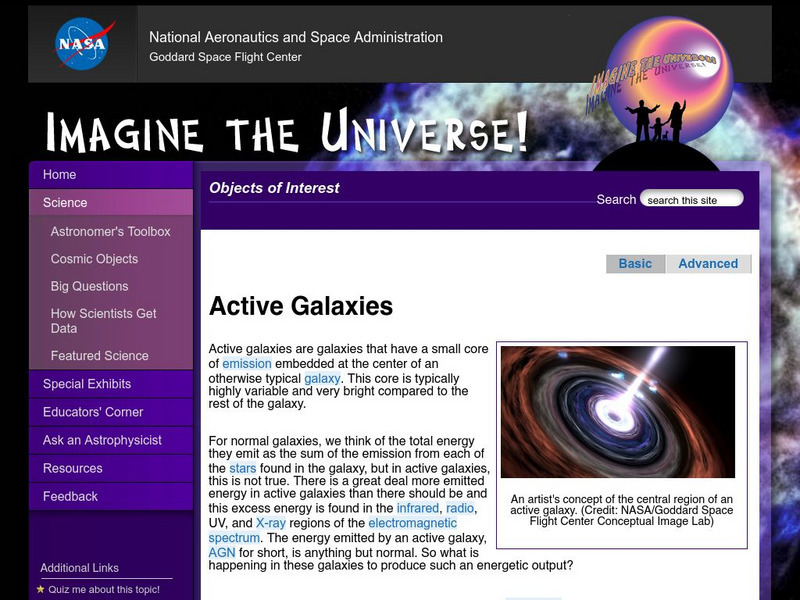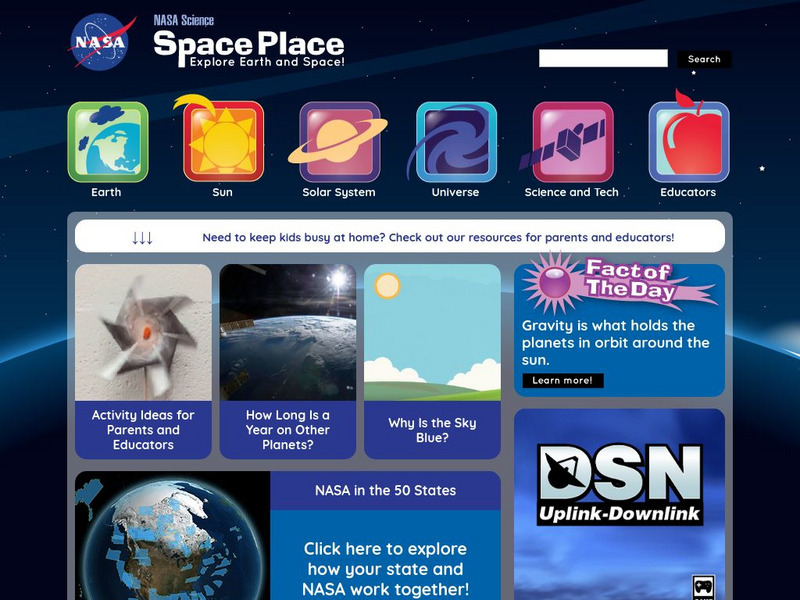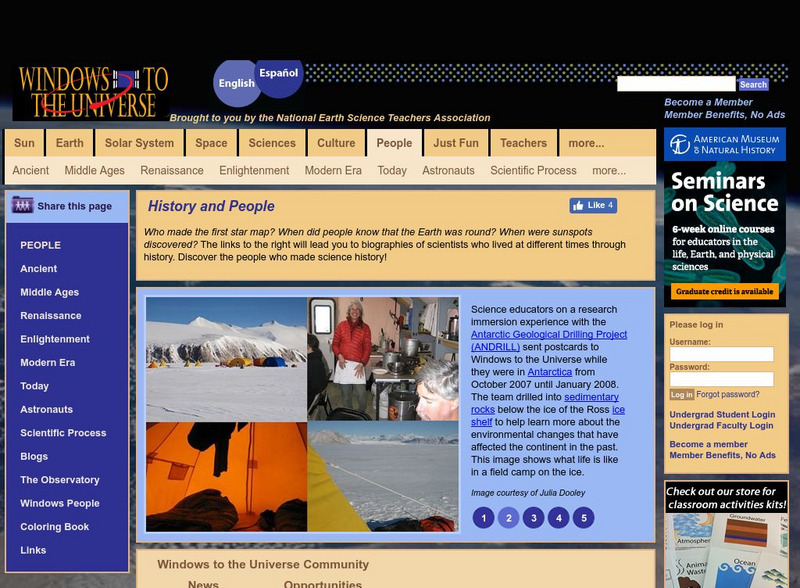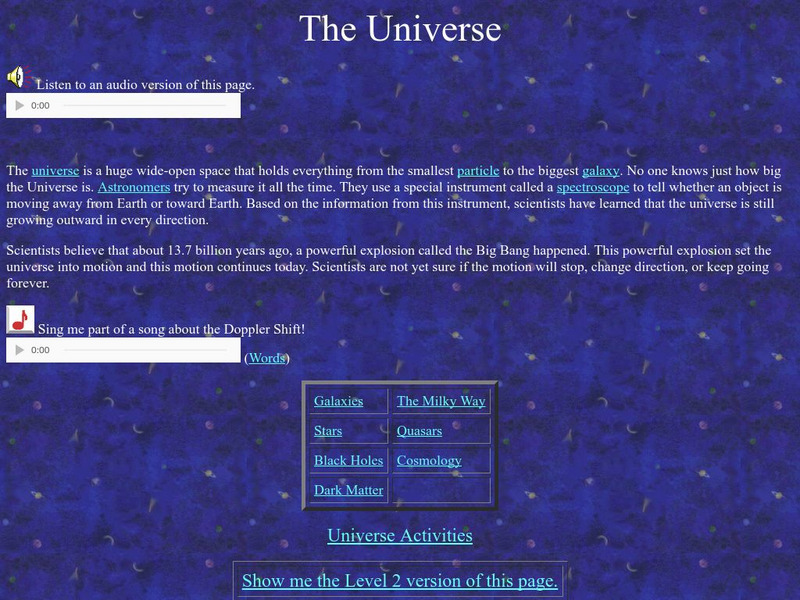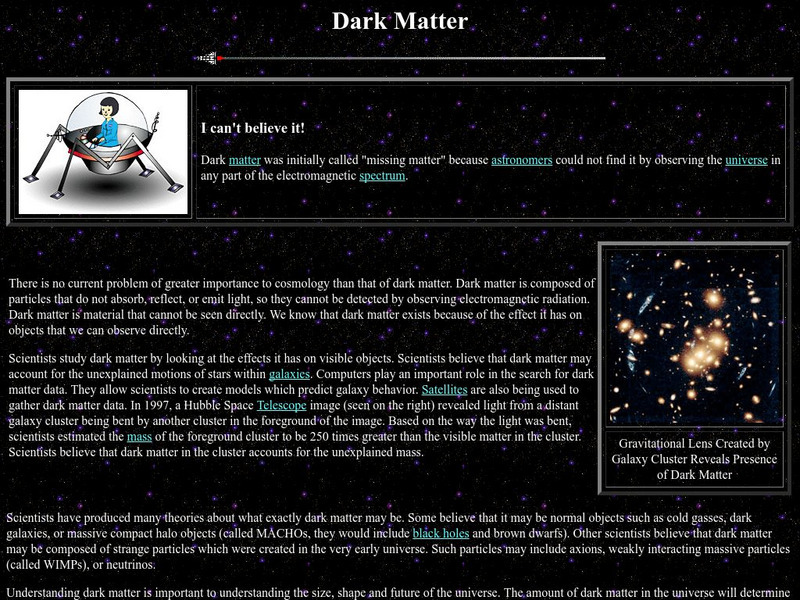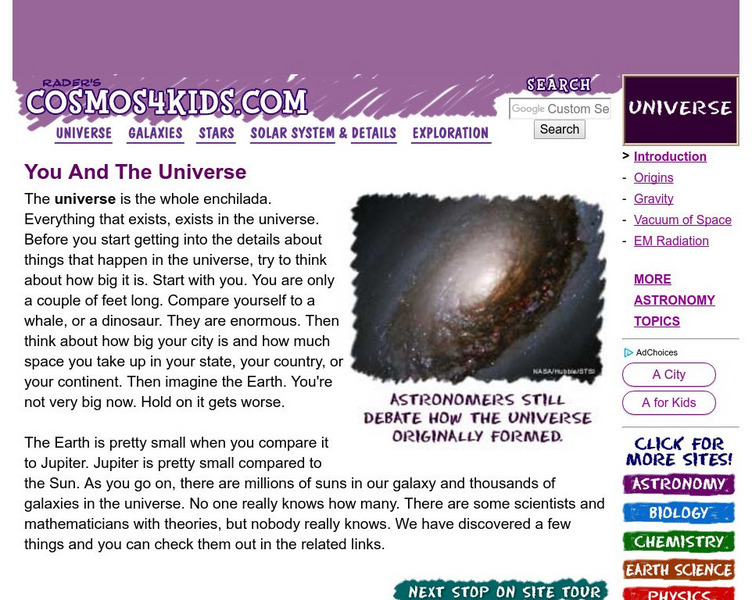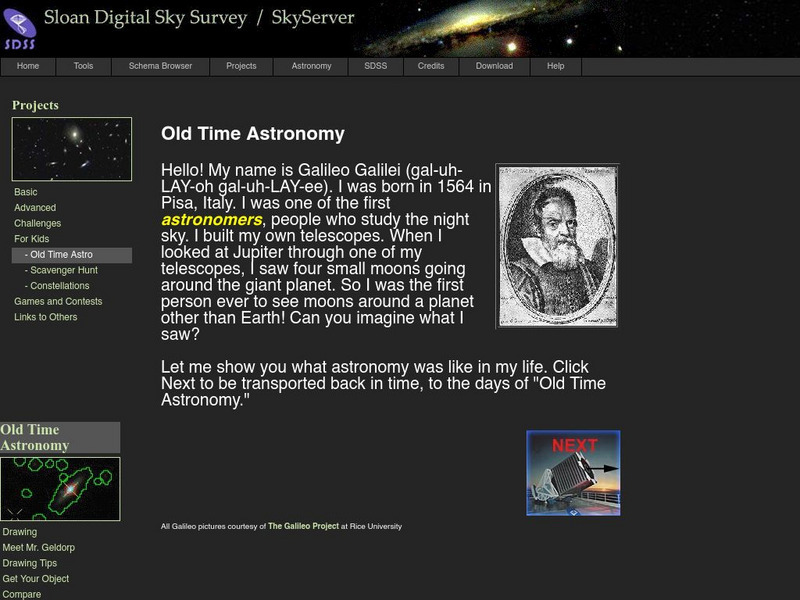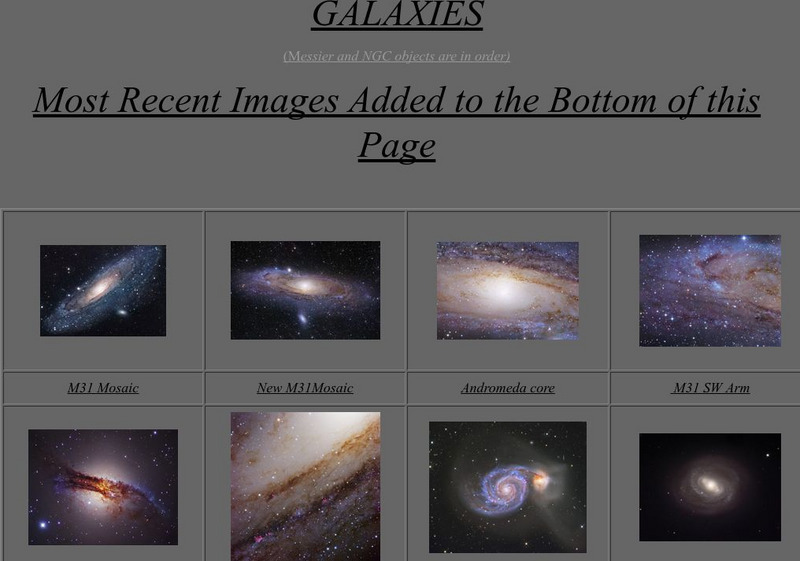Other
Physics.org: A Grain of Sand Covers 10,000 Galaxies
A fascinating look at how big our solar system really is. Shows how we can only see a tiny bit of our vast universe.
NASA
Nasa: The Space Place: How Old Do I Look?
Find out how the Galex space telescope is determining the age of galaxies using red-shifted light. View pictures taken by Galex. This site also has a game which involves determining the ages of objects.
NASA
Nasa: Imagine the Universe: Active Galaxies and Quasars
Describes quasars as being classified within the category of an active galaxy. A description of the emergence of high-energy. Definitions of key words are provided.gamma-ray quasars as an important component of the gamma-ray sky.
NASA
Nasa: Star Child: Elementary Astronomy Unit
Learn everything you can about outer space with this interactive astronomy unit. 2 levels of difficulty with modules on the solar system, the universe, other "space stuff" and a glossary of terms. Links for parents and other great website.
National Earth Science Teachers Association
Windows to the Universe: History & People
Biographies of people throughout history who looked at the sky and wondered what was there. Links to a detailed description of the planets and interactive activities.
NASA
Nasa: The Space Place
Do you know what a solar eclipse is? Or how about a galaxy? Space Place has the answers to all your questions about space! Site includes information to explore about planets, satellites, moons, and much more. Also on the website are...
NASA
Nasa Star Child: The Universe (Level 1)
This site provides an introduction to the origin of the universe for the young child and the Big Bang theory. There is also a song about the Doppler Shift. Vocabulary glossary and printable version available.
NASA
Nasa Star Child: Dark Matter (Level 2)
This site provides a description of "dark matter" and how scientists study it. Vocabulary words linked to a glossary of terms, and a printable version are also available on the site.
Other
Northrop Grumman Corporation: Into the Unknown: Resources
The Northrop Grumman Corporation provides numerous resource about outer space and beyond.
BBC
Bbc: Dark Matter
A clear explanation of how dark matter was discovered and why it is important to astronomers.
Cosmos 4 kids
Cosmos4 Kids: You and the Universe
What is the universe? Learn about this topic in this reference article which includes a video that discusses a finding of a distant galaxy by NASA's Hubble.
Cosmos 4 kids
Cosmos4 Kids: Everything Gathers
Understand that smaller parts make up the larger parts of our solar system. See that gas and dust come together to form a star, small rocks and asteroids come together to form planets, and so on. This page is a reference page that...
American Museum of Natural History
American Museum of Natural History: Ology: Milky Way Galaxy
How big is a billion? Find out some interesting facts about our galaxy, the Milky Way, and its billion stars.
Kidport
Kidport: Space Science
This complete resource will help students to improve their understand of space exploration. Includes images of the universe, galaxies, stars and planets.
National Institute of Educational Technologies and Teacher Training (Spain)
Ministerio De Educacion: La Situacion De La Tierra en El Universo
Throughout this unit you will make an imaginary journey that will transport you from the remotest infinity of the universe around us, to the surface of our planet. During this trip you will see the main features and components of our...
Smithsonian Institution
Smithsonian Learning Lab: The Universe, an Introduction
Start with the questions all students ask: How big is the universe, how far away are the planets and stars, how did they form and when, how do they move and why? Build on their natural curiosity. The Smithsonian, in cooperation with...
TED Talks
Ted: Ted Ed: The Search for Other Earth Like Planets
Olivier Guyon examines the possibility of finding other planets within astronomical numbers, some potentially rife with life. [6:21]
PBS
Pbs: Nova Online: Galaxies, Clusters, and Superclusters
PBS site explores these building blocks of the universe as well as their various types and clusters.
Other
University of Cambridge: Astro Adventure
Imagine a time when you can travel through space, planet to planet, cheaply and in comfort, when you can take a trip to the stars as your next holiday. Well, imagine no more. Learn more about the solar system as you take this trip of a...
Other
Sky Server: Old Time Astronomy
This site from SkyServer provides information where students are introduced to Galileo and are transported back in time to learn what "Old Time Astronomy," was all about.
Other
Astrophotography: Galaxies
Numerous high quality images of galaxies can be found in this site. Names, exposure times, and various magnifications are provided.
Other
Astrophotography: Galaxies
Numerous high quality images of galaxies can be found in this site. Names, exposure times, and various magnifications are provided.
Space Telescope Science Institute
Amazing Space: Hubble Deep Field Academy
At this site, young scholars can become a Steller Statistician, Cosmic Classifier, Galactic Guide or a Universal Graduate by attending the Hubble Deep Field Academy--and entering information in their Hubble Academy Log (HAL), which is...
Scholastic
Scholastic: Study Jams! Science: Our Solar System: The Universe
A video and a short multiple-choice quiz on the Universe and what it is made up of.




